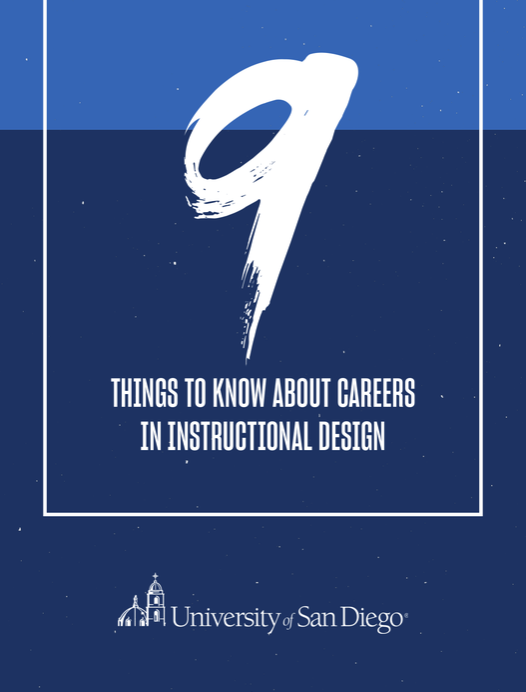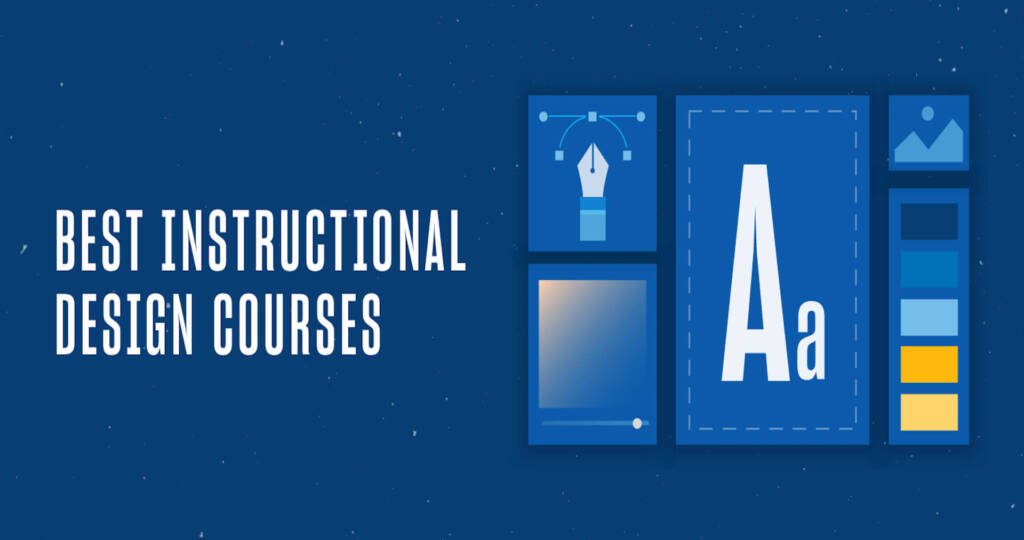How do college instructors ensure that their lessons are effective, and that students are grasping challenging concepts? How do a growing number of big companies train their employees and onboard new ones? How do a wide variety of government and private-sector organizations leverage modern tools to enhance learning and training? The processes are all different, but the ideal solution is the same: instructional design.
What was formed out of a need to provide skills training for thousands of individuals who were contributing to the war effort during World War II, instructional design today is one of the most vital and in-demand disciplines across all industries. Here is a quick guide to this exciting field and its future implications.
What is Instructional Design?
From an academic perspective, instructional design is defined as “the systematic and reflective process of translating principles of learning and instruction into plans for instructional materials, activities, information resources, and evaluation.” However, to fully understand the implications of instructional design processes, it helps to have a practical definition.
According to Instructional Design Central, instructional design is “the process by which learning products and experiences are designed, developed, and delivered. These learning products include online courses, instructional manuals, video tutorials, learning simulations, etc. The terms instructional design, instructional technology, learning experience (LX) design, curriculum design, and instructional systems design (ISD), are sometimes used interchangeably.”
Simply put, instructional design is creating learning or instructional experiences that facilitate the acquisition of new knowledge.
Basic Components of Instructional Design
While there are many different models and theories that guide instructional designers as they develop effective learning experiences, instructional design practices calls for all instruction to include three primary components:
- Clear goals and objectives
- Learning activities
- Assessments
These three pillars of instructional design make up what is called the Magic Triangle of Learning. Instructional design is most effective and learning outcomes are most successful when these three pillars are built with the “intention of interdependence,” or in a way that all three support each other.
Once goals and objectives, learning activities and assessments have been determined, instructional design process then calls for creating learning solutions that check these boxes:
- Theory-driven
- Query-driven
- Data-driven
- Outcomes-driven
5 Examples of Instructional Design Models
There are numerous ID models that instructional designers can use as their foundation when developing various learning exercises. The five most common and widely used instructional design models are:
- Bloom’s Taxonomy: Bloom’s Taxonomy is “a hierarchical ordering of cognitive skills that can help teachers teach and students learn.” Bloom’s Taxonomy has six levels: remember, understand, apply, analyze, evaluate, create.
- ADDIE Model: Arguably the most important instructional design model, ADDIE — analysis, design, development, implementation and evaluation — is used as a process guide when developing effective training tools.
- Iterative Design: Iterative design calls for “incrementally developing and refining a design based on feedback and evaluation.” Additional instructional design models have been spun out of iterative design including Rapid Prototyping and the Spiral Model.
- SAM Model: SAM is short for Successive Approximation Model, and is a simplified version of the ADDIE Model. Where the SAM Model differs is that feedback is collected earlier so designers can build working models earlier in the process. Where ADDIE processes are quite linear, SAM is a recursive process.
- Learning Circle Framework: TheLearning Circle Framework is an instructional design model that works in three phases: target, create and launch.
Benefits of Instructional Design
Using the theories of instructional design to build teaching exercises can elicit numerous positive benefits for learners. However, those benefits are a ripple effect from one anchoring principle — instructional design is a systematic process rooted in theory. Because of this fact, instructional designers can leverage their skills and knowledge to recommend the ideal instructional activities and assessments that align with the desired learning objectives.
So, regardless of the industry or goal of the learning exercises, instructional design will consistently deliver the same benefits. Those include:
- Creates focused/customized programs
- Encourages more student participation (interactive instructional design)
- Sets clear and measurable objectives
- Creates consistency
- Simplifies learning for students
What is an Instructional Designer?
Instructional Design Central characterizes an instructional designer as the “architect” of learning exercises. “Instructional designers create and deliver learning products for business, K-12, higher education and government organizations.”
Instructional designers have three significant tools of the trade:
- The first is process, which is the foundation of many instructional design models. ADDIE is more of an ID process, as evidenced by the development of the SAM Model. The instructional design process, regardless of which model is used, helps ensure instruction is created efficiently.
- Next is theory. Theories about how people learn inform the decisions instructional designers make about designing learning experiences and developing instructional materials. Theory helps ensure the acquisition and retention of new knowledge and skills.
- Third is the actual tools instructional designers use to deliver instruction. Depending on the learners’ needs, tools can be as simple as paper and pencil, more advanced such as eLearning authoring tools, or cutting-edge augmented reality.
Careers in Instructional Design
There has never been a better time to enter the instructional design career field. Inside Higher Ed has dubbed instructional designer “The Hottest Job in Higher Education,” as national demand for qualified professionals has grown more than 20%. As a result, salary potential is trending up, as are the diverse opportunities for instructional designers.
Salary information from employment websites shows annual pay starting in the $65k range and tracking much higher depending on the employer and the level of responsibility. While salary figures are subject to change as new data comes in, here is a sampling of salary ranges as of the publication of this report:
- ZipRecruiter lists an average salary of $80,182, ranging up to $132,500
- Glassdoor lists an average salary of $69,395, ranging up to $100,000
- Salary.com lists an average salary of $69,395, ranging up to $92,820
- Indeed lists an average salary of $76,390, higher in key locales such as Washington, DC ($100, 924), Charlotte, NC ($81,280), Tampa, FL ($72,860) and New York City ($71,621)
It’s not just educational institutions seeking instructional designers; a quick search of instructional design job postings on LinkedIn shows that some of the top tech, health care, financial services and retail companies are actively seeking applicants to help them craft effective learning exercises. Some brands you may recognize include Amazon, Tesla, Microsoft, Uber, Morgan Stanley, Fidelity, Gartner, Xerox, Harvard, Bergdorf Goodman and more.
Future of Instructional Design
The COVID-19 pandemic made clear just how critical it is to find the most effective ways to reach learners. As instruction moved online, teachers were left wondering — how can I translate classroom teaching tactics to a video platform? The answer lies in instructional design; instructors can leverage ID theories and models to create effective lessons, regardless of the setting.
In terms of instructional design trends, there is one emerging concept that is gaining steam. Microlearning is the idea that instructional materials can and should be crafted in small digestible segments that learners can access wherever they are. Say you have a learner who commutes 45 minutes via train, instructional materials can be created that fit that timeframe so they can complete the training before they get to work or get home. This not only means that instructors can more effectively meet their learners where they are, they can also save on training development time and resources.
Today, there is growing recognition of the value of the instructional design discipline; it is not an add-on to traditional teaching but is rather its own entity that is supported by theory. This has sparked new interest in working in this field and pursuing a degree in instructional design. The online Master of Science in Learning Design and Technology offered by the University of San Diego features a curriculum that focuses on student-centric topics such as digital literacy skills, emerging technology, learning experience design and more. Armed with these proficiencies, graduates of the USD LDT program are ready to launch a career in this fast-growing field.
FAQs About Instructional Design
Q: What is Instructional Design?
A: Instructional design is “the process by which learning products and experiences are designed, developed, and delivered. These learning products include online courses, instructional manuals, video tutorials, learning simulations, etc. The terms instructional design, instructional technology, learning experience (LX) design, curriculum design, and instructional systems design (ISD), are sometimes used interchangeably.”
Q: What are some of the most popular instructional design models?
A: ADDIE is the most widely used instructional design model, but some additional models and theories to know include the SAM Model, Bloom’s Taxonomy, Iterative Design and the Learning Circle Framework.
Q: What are the primary benefits of instructional design?
A: The most important benefit of instructional design is that it is a systematic process rooted in sound, research-based theory. This means that instructional exercises born from these principles have been proven to be effective. From there, there are a ripple effect of positive outcomes:
- Creates focused/customized programs
- Encourages more student participation (interactive instructional design)
- Sets clear and measurable objectives
- Creates consistency
- Simplifies learning for students
![Preview image of What is Instructional Design? [5 Examples + Overview]](https://onlinedegrees.sandiego.edu/wp-content/uploads/2021/08/ldt_blog_whatisid.png)


![How to Become an Instructional Designer [6-Step Guide]](https://onlinedegrees.sandiego.edu/wp-content/uploads/2021/08/ldt_blog_becomeanid-1024x576.png)
![Instructional Designer vs. eLearning Developers [Career Comparison]](https://onlinedegrees.sandiego.edu/wp-content/uploads/2023/03/ldt_blog_idvselearningdev-1024x576.png)